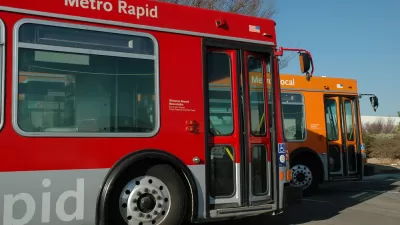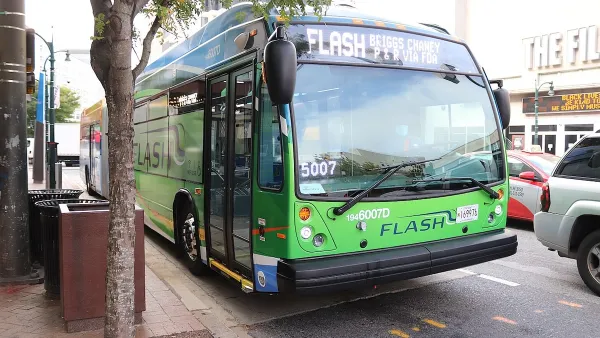A new bioenergy facility in Maryland will convert captured methane to Renewable Natural Gas.

WSSC Water, a bi-county water agency serving Prince George and Montgomery Counties in Maryland, is partnering with Montgomery County to build a bioenergy facility that will capture methane gas produced during wastewater treatment and turn it in to Renewable Natural Gas (RNG) to be used for the county’s Ride On buses.
Patrick Herron describes the Piscataway Bioenergy Facility in an article for The MoCo show, writing, “Once construction of the bioenergy facility is complete in the fall of 2024, all biosolids from WSSC Water’s five other plants will be delivered to the new facility. Through innovative technology, the amount of biosolids left over from the new treatment process will be significantly reduced and cleaner (Class A). A state-of-the-art digestion process creating these Class-A biosolids will generate methane gas, which will be captured and upgraded on site to RNG.” WSSC also plans to sell renewable energy credits.
“Construction of the $271 million facility in Accokeek, Maryland, began in the spring of 2019 and is expected to be substantially complete by November 2024.” County Executive Marc Elrich said “This agreement to turn methane gas into fuel for our buses is a win-win-win for our constituents, commuters and, most importantly, our environment.”
FULL STORY: WSSC Water and Montgomery County Partner to “Turn Poop to Power”

Maui's Vacation Rental Debate Turns Ugly
Verbal attacks, misinformation campaigns and fistfights plague a high-stakes debate to convert thousands of vacation rentals into long-term housing.

Planetizen Federal Action Tracker
A weekly monitor of how Trump’s orders and actions are impacting planners and planning in America.

San Francisco Suspends Traffic Calming Amidst Record Deaths
Citing “a challenging fiscal landscape,” the city will cease the program on the heels of 42 traffic deaths, including 24 pedestrians.

Half of Post-Fire Altadena Home Sales Were to Corporations
Large investors are quietly buying up dozens of properties in Altadena, California, where a devastating wildfire destroyed more than 6,000 homes in January.

Opinion: What San Francisco’s Proposed ‘Family Zoning’ Could Really Mean
Mayor Lurie is using ‘family zoning’ to encourage denser development and upzoning — but could the concept actually foster community and more human-scale public spaces?

Jacksonville Launches First Autonomous Transit Shuttle in US
A fleet of 14 fully autonomous vehicles will serve a 3.5-mile downtown Jacksonville route with 12 stops.
Urban Design for Planners 1: Software Tools
This six-course series explores essential urban design concepts using open source software and equips planners with the tools they need to participate fully in the urban design process.
Planning for Universal Design
Learn the tools for implementing Universal Design in planning regulations.
Gallatin County Department of Planning & Community Development
Heyer Gruel & Associates PA
JM Goldson LLC
City of Camden Redevelopment Agency
City of Astoria
Transportation Research & Education Center (TREC) at Portland State University
Jefferson Parish Government
Camden Redevelopment Agency
City of Claremont




























